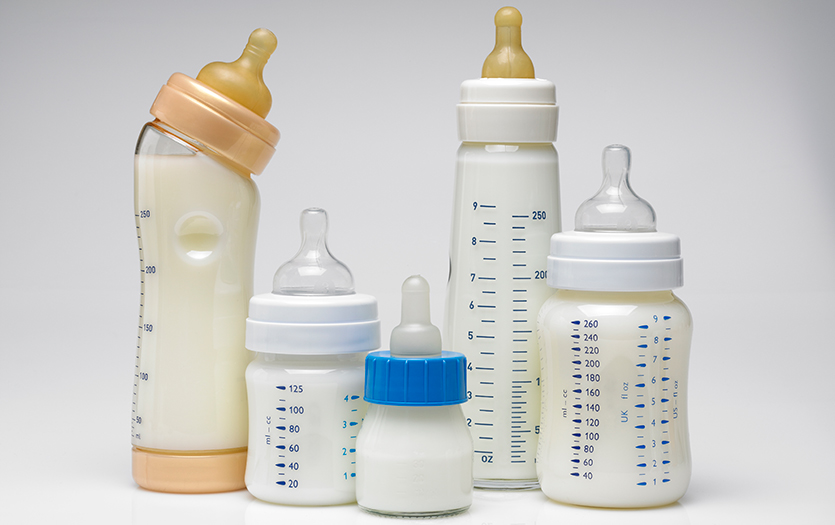
This post was written by Greshma George, MD, PPG – Pediatrics and Primary Care.
Breastfeeding is the first and most recommended choice for nourishing babies, however there may come a time when using a bottle becomes necessary. It could be due to inability to breastfeed, returning to work, supplementing feedings or giving other primary caregivers the opportunity to bond with baby. When this transition comes, how do you know which bottle to choose? There are so many options available in the market. In this post we’ll cover the pros and cons of what’s out there, and how to find the best fit to support your infant feeding journey.
If you’re planning to pump breastmilk, this article has some helpful pointers.
What should parents look for when purchasing bottles?
There are multiple factors to consider when you are purchasing bottles. Some things to keep in mind include:
- Material – Is the bottle made of glass, plastic or silicone? Each one has its own pros and cons.
- Nipple shape and flow – Flow rate should be appropriate for the baby's age and needs.
- Size – Smaller bottles are best for newborns while larger ones can be used for older babies.
- Ease of cleaning – Always choose bottles with fewer parts. This ensures they’re easier to clean which reduces the risk of bacterial buildup.
- Anti-colic features – If your baby has issues with gas, reflux or colic, there are bottles designed to reduce the infant’s air intake. Studies are limited on their effectiveness.
What should parents avoid when purchasing bottles?
So much of selecting a bottle is a matter of personal preference, but there are some things to avoid, such as:
- Complicated designs – These intricate models can be very hard to clean, which can predispose the child to infections like thrush.
- Harmful chemicals – Avoid brands that have other chemicals in them. Always look for BPA-free options.
-
Fast flow nipples – We advocate for parents to choose nipples that release the breastmilk or formula in a flow that’s appropriate for their infant. If the nipple has faster flow than needed, it can lead to the baby choking while he/she eats. If it’s too slow, the infant can get frustrated with the feeding. Nipples are usually numbered 0 and up based on flow rate.
- Cracked or torn nipples – Check the nipples of your bottles for any damage, such as tears, as the small pieces can come off, creating a dangerous choking hazard. These cracks can also pinch or cut the baby’s tongue or mouth.
Which material is best for baby bottles?
Glass and plastic are both good options with their own pros and cons. It comes down to the parent’s choice based on the ease and comfort they observe during feedings.
Glass bottles are more durable, chemical-free, and don’t retain any stains or odors. The downside is they have a potential to break easily.
Plastic bottles are often shatter-proof and lightweight, but they can absorb smells over time. Remember, always choose BPA-free brands.
What about bottles with components to reduce gas?
There are multiple bottles on the market with venting systems to prevent gas. These are designed to reduce the amount of air the baby takes in. They can be helpful if your infant has issues related to gas, but it’s important to look for the option with the fewest parts to ensure adequate cleaning. There are limited studies to prove the efficacy of these vented models.
What's most important?
The most important factors are baby’s comfort and the ease of use for parents. It might take multiple attempts to find the right bottle and nipple, as each baby has their own unique preferences. Don’t worry, you’ll find a combination that works for your little one. Keep everything clean and sterile to keep feedings safe.
If you have any questions about your infant’s feeding needs, be sure to ask your family doctor or pediatrician. They are there to help!
References
American Academy of Pediatrics website. Practical bottle feeding tips.
Centers for Disease Control and Prevention website. How to clean, sanitize, and store infant feeding items FAQs.



